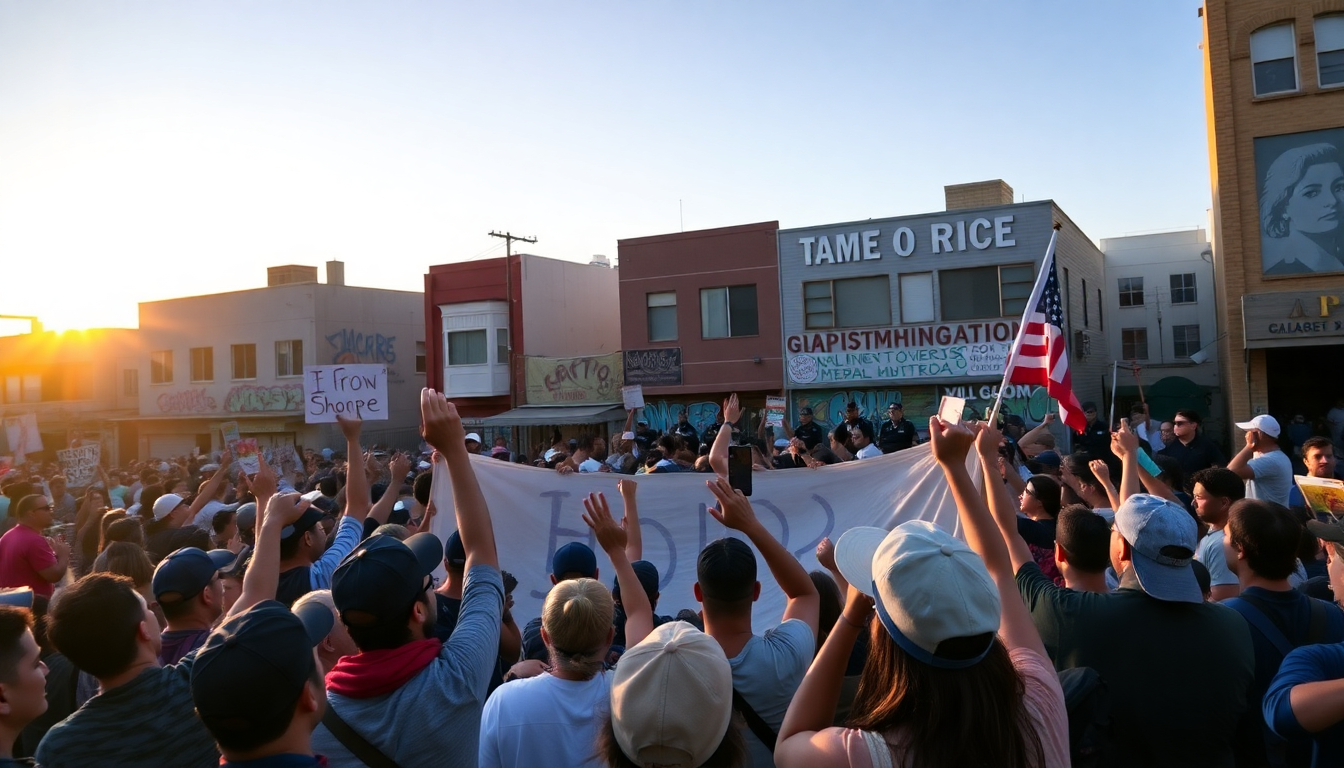Table of Contents
The recent surge in immigration protests across Los Angeles has certainly caught the public’s eye, shining a light on the intricate web of immigration policies and the sentiments of those affected. With tensions rising—especially during the anti-ICE demonstrations—it’s essential to dive into what’s really happening and what it means for both the community and law enforcement. These protests, driven by frustration over deportation practices and ICE raids, are not just random outbursts; they tell a larger story about immigration in the United States.
Background of the Protests
Things really kicked off last month when demonstrators took to the streets to voice their opposition to the actions of Immigration and Customs Enforcement (ICE). The unrest peaked on July 4, 2025, as a massive crowd marched downtown, starting from City Hall and moving through the streets in a powerful show of solidarity against what they see as injustices. Law enforcement was not far behind, with a notable presence that included U.S. Marines and National Guard troops, leading to some tense confrontations and multiple arrests.
To truly grasp the reasons behind these protests, we need to look at what’s motivating the activists. Many argue that current immigration policies are too harsh and disproportionately impact vulnerable communities. They believe these measures create fear and disrupt families, especially for those simply looking for a better life. This perspective resonates strongly within the community, sparking organized demonstrations and drawing in more participants.
Law Enforcement Response and Public Safety
Law enforcement’s response has been a bit of a balancing act, aiming to keep the peace while respecting the rights of the demonstrators. The Los Angeles Police Department has reported a combination of peaceful protests and skirmishes with outside agitators, which creates a complicated scenario that requires nuanced management. As tensions escalated, police resorted to using less-lethal munitions to control the crowds, a strategy that has received mixed reviews from the public.
As events continue to unfold, the role of law enforcement is under the microscope. Critics argue that a heavy-handed approach could worsen tensions, while supporters maintain it’s a necessary measure for public safety. This ongoing debate highlights the tricky balance between civil liberties and security in times of unrest.
The Broader Implications for Immigration Policy
The protests in Los Angeles are a reflection of a broader national conversation about immigration policy and enforcement. The decision by the Trump administration to deploy National Guard troops amid rising discontent has ignited discussions about whether such actions are appropriate. This situation forces us to question the effectiveness of current immigration strategies and their impact on community relations.
As public sentiment shifts, policymakers must face the reality of these protests. With calls for reform echoing louder, there’s a unique opportunity to rethink immigration policies to create a more inclusive approach. Engaging with communities and genuinely listening to their concerns could pave the way for solutions that balance security with compassion.
Looking Ahead: Potential Resolutions and Community Engagement
As Los Angeles navigates these turbulent times, it’s crucial to focus on constructive dialogue and community engagement. Policymakers, law enforcement, and community leaders need to collaborate to tackle the root issues fueling this unrest. Building trust within the community is essential for moving forward.
It’s likely that protests will continue as awareness grows, but with proactive measures aimed at understanding and addressing these concerns, there’s real potential for meaningful conversations. In the long run, fostering cooperation between law enforcement and communities can lead to a more harmonious relationship, ultimately creating a more effective and humane immigration policy.


